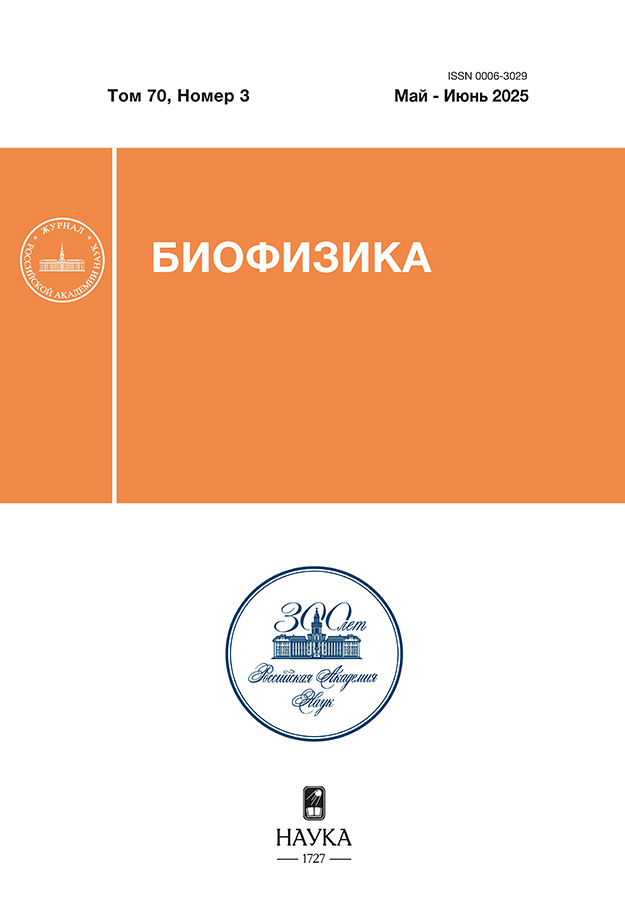Study of Peculiarities of the Formation of Behavioral Skills in Rats in the Three-Arm Maze
- Authors: Dragan S.P1, Komarov D.B1, Veselovsky I.A1, Bogomolov A.V1
-
Affiliations:
- State Research Center – A.I. Burnasyan Federal Medical Biophysical Center, Federal Medical Biological Agency of Russia
- Issue: Vol 69, No 5 (2024)
- Pages: 1104-1108
- Section: Complex systems biophysics
- URL: https://kld-journal.fedlab.ru/0006-3029/article/view/676143
- DOI: https://doi.org/10.31857/S0006302924050154
- EDN: https://elibrary.ru/MJDNUE
- ID: 676143
Cite item
Abstract
The aim of our experimental research was to explore the formation of behavioral skills such as active avoidance learning in different species of rats in the three-arm maze. To determine which species is the most trainable, our study used 100 white outbred, 30 Long Evans and 30 Dumbo rats. The conditioned stimulus was a combination of playing the sound and turning off the light in a randomly selected target arm of the maze. 5 sec after the buzzer started to sound the light was turned off, then an unconditioned stimulus, the electric power, was applied to non-target arm, and the light was turned on. The task of the rat was to change the arm and enter the target (safety) arm of the maze after the sound stimulus. When the task was done, the floor of non-target arm was not charged furhter and the light was turned off. The interval between conditioned/unconditioned stimulus combinations was 30 s, it took 1 month to train each rat species and 20 sessions with different combinations of stimuli were used every day. The rat was considered trained when the probability of achieving the goal within a time limit not exceeding 6 s is 70% or higher of cases. It has been found that Dumbo rats are the best animals to train quickly in large groups to respond to an irritating stimulus.
About the authors
S. P Dragan
State Research Center – A.I. Burnasyan Federal Medical Biophysical Center, Federal Medical Biological Agency of Russia
Email: s.p.dragan@rambler.ru
Moscow, 123098 Russia
D. B Komarov
State Research Center – A.I. Burnasyan Federal Medical Biophysical Center, Federal Medical Biological Agency of RussiaMoscow, 123098 Russia
I. A Veselovsky
State Research Center – A.I. Burnasyan Federal Medical Biophysical Center, Federal Medical Biological Agency of RussiaMoscow, 123098 Russia
A. V Bogomolov
State Research Center – A.I. Burnasyan Federal Medical Biophysical Center, Federal Medical Biological Agency of RussiaMoscow, 123098 Russia
References
- Максимов И. Б., Столяр В. П. и Богомолов А. В. Прикладная теория информационного обеспечения медико-биологических исследований (Бином, М., 2013).
- Kislova Yu. V., Bogomolov A. V., and Soloshenko N. V. Mathematical modeling of cardiovascular system in patients with hemorrhage and hypothermia. Biomed. Engineer., 40 (4), 167–170 (2006). PMID: 16989217
- Драган С. П., Кезик В. И. и Богомолов А. В. Физиологические аспекты импедансометрии легких. Изв. РАН. Сер. биол., № 2, 181–190 (2022). doi: 10.31857/S1026347022010061, EDN: ECAYRX
- Фёдоров М. В., Богомолов А. В., Цыганок Г. В. и Айвазян С. А. Технология проектирования многофакторных экспериментальных исследований и построения эмпирических моделей комбинированных воздействий на операторов эрготических систем. Информационно-измерительные и управляющие системы, 8 (5), 53–61 (2010). EDN: OPBPHH
- Ушаков И. Б. и Богомолов А. В. Диагностика функциональных состояний человека в приоритетных исследованиях отечественных физиологических школ. Медико-биологические и социальнопсихологические проблемы безопасности в чрезвычайных ситуациях, № 3, 91–100 (2021). doi: 10.25016/2541-7487-2021-0-3-91-100
- Седов Л. И. Методы подобия и размерности в механике (Наука, М., 1987).
- Даренская Н. Г., Ушаков И. Б., Иванов И. В., Иванченко А. В. и Насонова Т. А. От эксперимента на животных – к человеку: поиски и решения (Научная книга, Воронеж, 2010).
- Нотова С. В., Казакова Г. В. и Маршинская О. В. Современные методы и оборудование для оценки поведения лабораторных животных (обзор). Животноводство и кормопроизводство, 101 (1), 106 (2018). EDN: OYSMIX
- Notova S. V., Kazakova G. V., and Marshinskaya O. V. Modern methods and equipment for assessing the behavior of laboratory animals (review). Livestock and feed production, 101 (1), 106−115 (2018).
- Хоцкин Н. В., Куликов В. А., Завьялов Е. Л., Фурсенко Д. В. и Куликов А. В. Проведение и автоматизация теста «водный лабиринт Морриса» в условиях SPF-вивария. Вавиловский журнал генетики и селекции, 19 (4), 388–393 (2015). doi: 10.18699/VJ15.049
- Муртазина Е. П., Буянова И. С. и ГинзбургШик Ю. А. Экспериментальные модели диадического оперантного поведения крыс в различных социальных контекстах. Зоологич. журн., 100 (5), 540 (2021). doi: 10.31857/S0044513421050093, EDN: PRWPQG
- Cravedi K. D., May M. D., Abettan J. A., Huckleberry K. A., Trettel S. G., Vuong C. V., Altman D. E., Gauchan S., Shansky R. M., Matson L. M., Sousa J. C., Lowery-Gionta E. G., and Moore N.L.T. Response and recovery of endocrine, behavioral, and neuronal morphology outcomes after different traumatic stressor exposures in male rats. Psychoneuroendocrinology, 133, 105394 (2021). doi: 10.1016/j.psyneuen.2021.105394
- Григорьев Н. Р., Ли Т. и Ли Ш. Ю. Когнитивные способности крыс в оперантном поведении активного избегания в различные этапы онтогенеза. Журн. высш. нерв. деятельности им. И.П. Павлова, 64 (3), 314–323 (2014). doi: 10.7868/S0044467714030058, EDN: SFAJCZ
- Драган С. П., Богомолов А. В. и Кезик В. И. Анализ импедансных характеристик дыхательной системы животных и человека. Рос. журн. биомеханики, 24 (2), 187–195 (2020).
- Драган С. П., Комаров Д. Б., Веселовский И. А. и Богомолов А. В. Аппаратно-программный комплекс для экспериментального исследования поведенческих реакций лабораторных животных. Приборы и техника эксперимента, № 6, 131–132 (2021). doi: 10.31857/S0032816221060082, EDN: GOHGKL
- Драган С. П., Веселовский И. А., Комаров Д. Б. и Богомолов А. В. Метод ика формирования поведенческих реакций у лабораторных животных. Sib. J. Life Sci. Agriculture, 15 (5), 217–234 (2023). doi: 10.12731/2658-6649-2023-15-4-11-28, EDN: GKNAYA
Supplementary files











